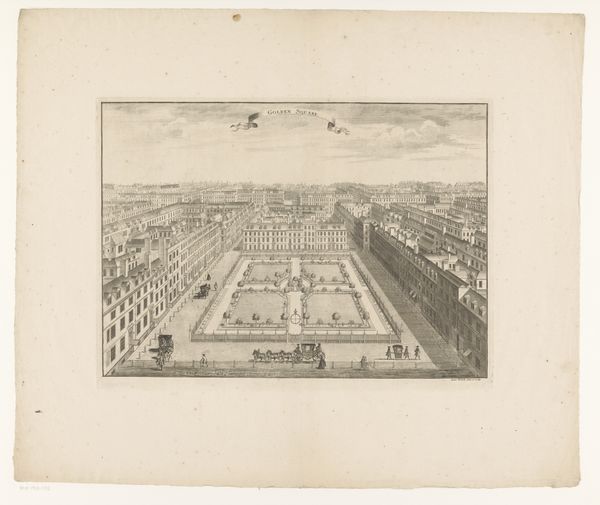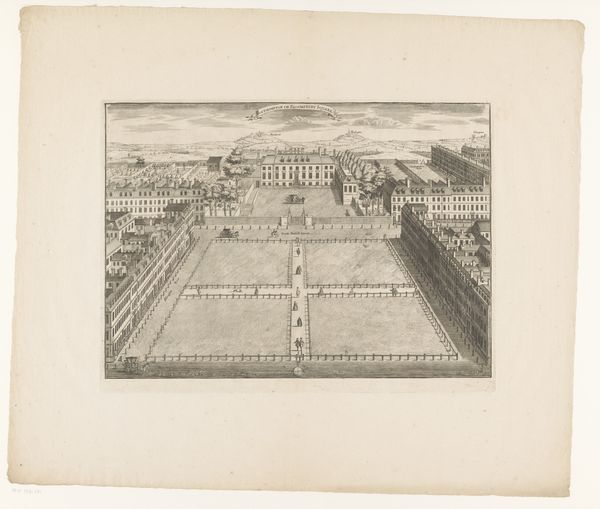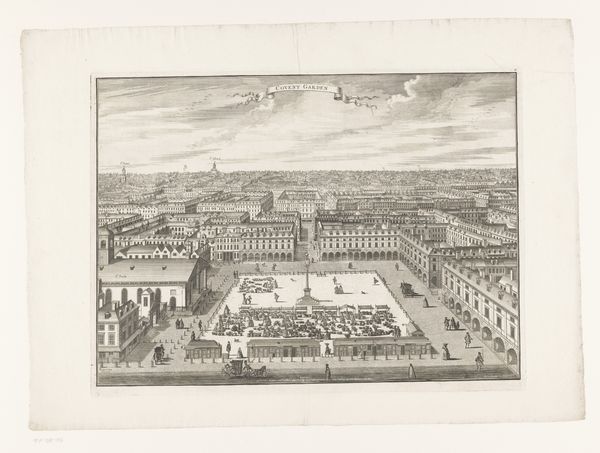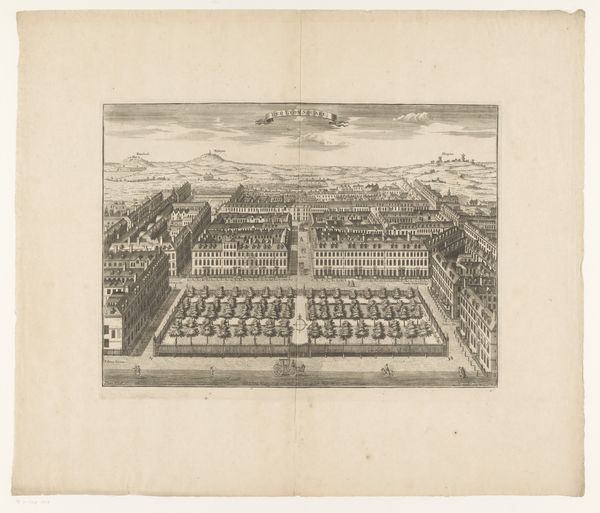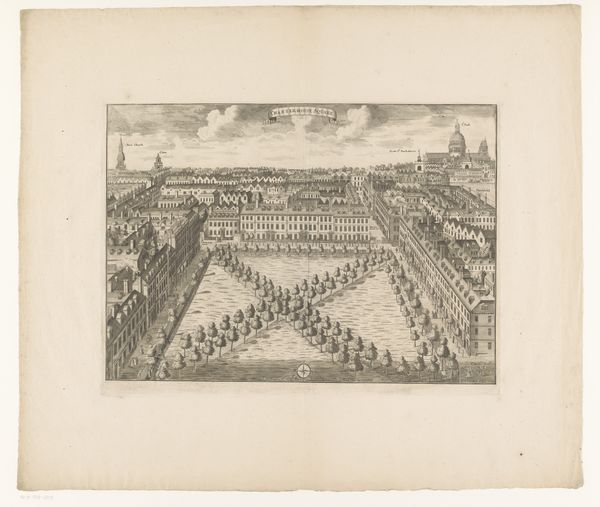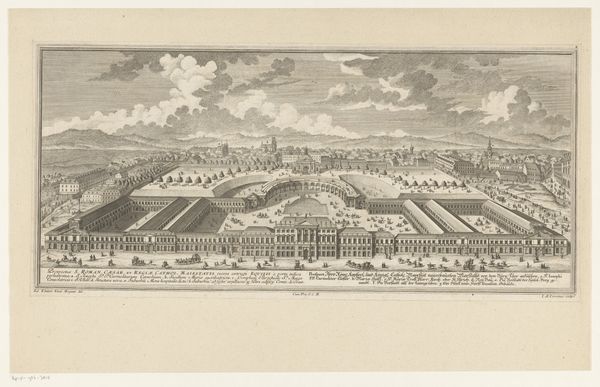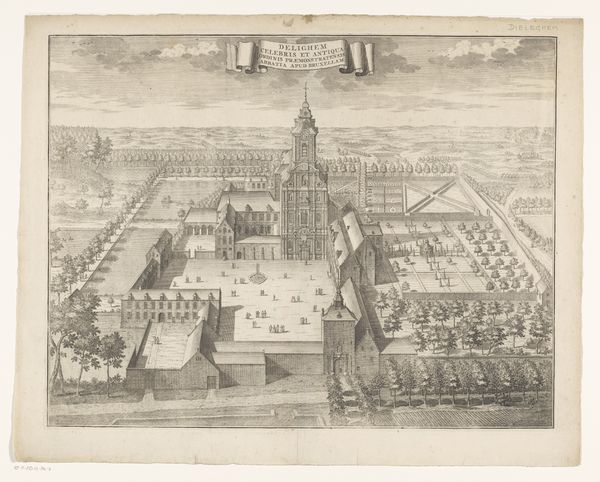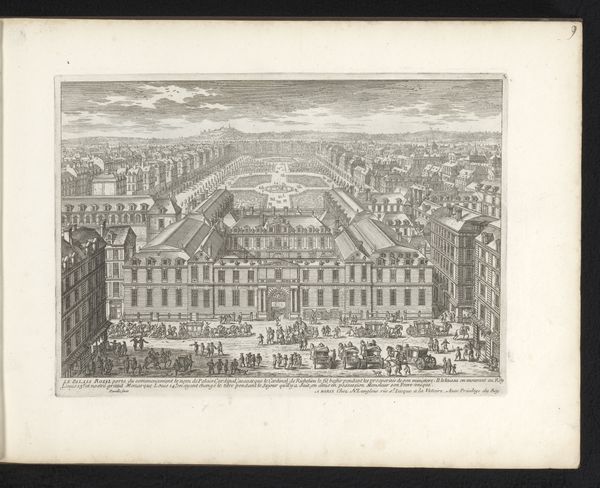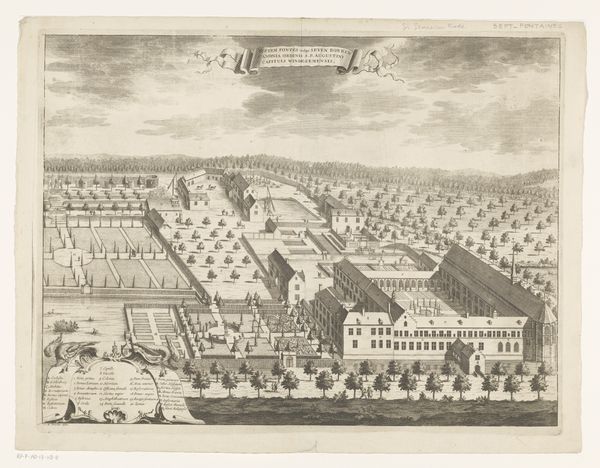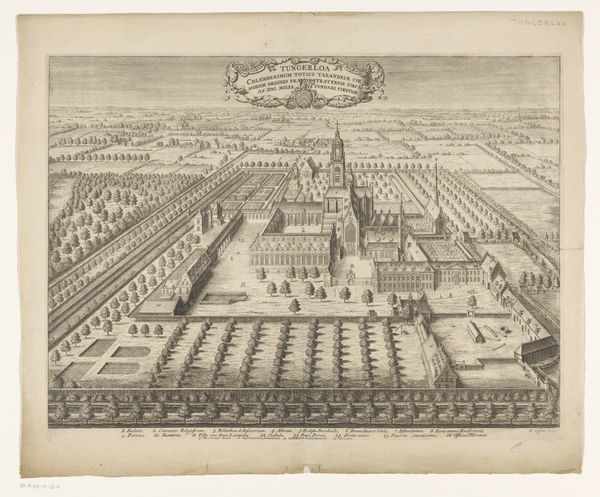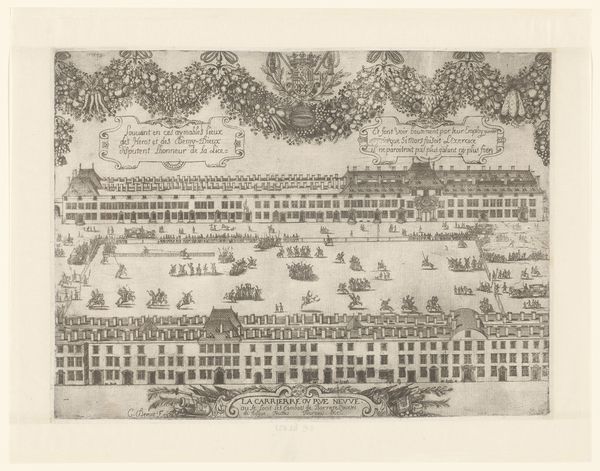
print, engraving
#
baroque
#
ink paper printed
# print
#
old engraving style
#
pen work
#
cityscape
#
engraving
Dimensions: height 342 mm, width 480 mm
Copyright: Rijks Museum: Open Domain
Editor: This is "Gezicht op St James's Square" by Sutton Nicholls, created between 1720 and 1731. It's an engraving. The intricacy is incredible; the lines are so precise! What stands out to you in terms of the image’s structural composition? Curator: The meticulous linework defines the geometry of the urban landscape. Notice how Nicholls utilizes perspective to create a sense of depth, guiding the eye towards the focal point: the church. How do you see the light interacting with the scene? Editor: It's subtle. The light feels evenly distributed, not dramatic, emphasizing the architectural details rather than creating stark contrasts. What can we infer from the deliberate absence of deep shadows? Curator: That the artist seeks to emphasize the clarity of form. Every facade, every window is rendered with equal care. Observe the relationship between the buildings and the open square. How does this dynamic inform our understanding of space within the work? Editor: The buildings form a structured frame around the open space, highlighting a controlled environment. The symmetry seems intentional, projecting an idea of order. Would you agree? Curator: Precisely! The visual language speaks of control, rationality, and the aesthetics of order in baroque urban design. The density of the engraved lines adds another layer, suggesting weight and permanence to the architectural forms depicted. Editor: This perspective truly enhanced my appreciation for the details. It's like Nicholls isn't just showing a place, but also showcasing a carefully crafted vision. Curator: Indeed, the engraving becomes a study of form and structure through the skillful arrangement of line and space, revealing the aesthetic intent embedded within.
Comments
No comments
Be the first to comment and join the conversation on the ultimate creative platform.


